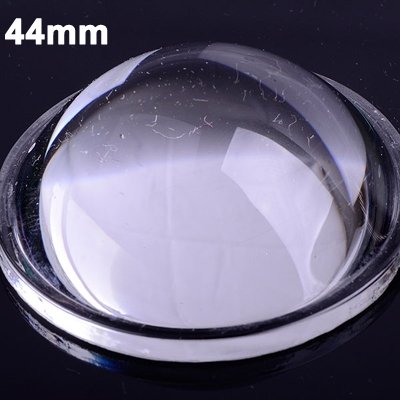
Introduction:
Projectors have become an integral part of our lives, whether it’s for business presentations, educational purposes, or home entertainment. These devices have evolved over the years to provide better image quality, clarity, and brightness. One crucial component that contributes to the performance of a projector is the lens. In particular, convex lenses are widely used in projectors for their unique optical properties. In this article, we will delve into the reasons why projectors use convex lenses and how they contribute to creating captivating visual experiences.

Why do Projectors Use Convex Lenses?
Projectors utilize convex lenses for several reasons, each playing a vital role in projecting high-quality images onto screens or surfaces. Let’s explore the key reasons why projectors rely on convex lenses.
- Converging Light Rays: Convex lenses are designed to converge light rays, bringing them together at a focal point. This convergence allows projectors to focus the light onto a specific area, resulting in a sharp and well-defined image.
- Image Magnification: Convex lenses can magnify images, making them appear larger than their actual size. By adjusting the distance between the lens and the screen, projectors can control the image size to suit the desired projection area.
- Correcting Optical Aberrations: Convex lenses help correct various optical aberrations, such as spherical aberration and chromatic aberration. Spherical aberration occurs when light rays passing through different parts of a lens do not converge at a single focal point, leading to a blurry image. Convex lenses minimize this effect, ensuring sharper and clearer projections. Chromatic aberration, on the other hand, causes color fringing and distortion. Convex lenses help reduce chromatic aberration, resulting in more accurate color reproduction.
- Wider Field of View: Convex lenses offer a wider field of view, allowing projectors to cover larger projection areas. This is particularly important for applications such as presentations, where a broader display is necessary to cater to a larger audience.
- Light Gathering and Projection: Convex lenses are capable of capturing and gathering light from a source, such as an LED or lamp, and directing it towards the screen or surface. This ensures maximum utilization of available light, resulting in brighter and more vibrant images.
- Uniform Light Distribution: Convex lenses help distribute light evenly across the projection surface, minimizing hotspots or areas of concentrated brightness. This ensures a uniform and balanced image quality throughout the projection.
The Science Behind Convex Lenses:
To understand why projectors use convex lenses, it’s essential to grasp the underlying science that makes these lenses so effective. Convex lenses are thicker at the center and thinner at the edges, causing light rays passing through them to bend inward. This bending is known as refraction and is responsible for the converging properties of convex lenses.
When parallel rays of light pass through a convex lens, they converge toward a focal point on the opposite side of the lens. This focal point is where the image is formed, and the distance between the lens and the focal point determines the size of the projected image. By adjusting the lens-to-screen distance, projectors can control the magnification and focus of the image.
Additionally, convex lenses counteract spherical aberration by ensuring that light rays passing through different parts of the lens converge at a single focal point. This results in a sharper and more focused image. Moreover, chromatic aberration is reduced through the use of specialized lens coatings and materials, enhancing color accuracy and overall image quality.
Benefits of Projectors:
Convex lenses offer several benefits when used in projectors, making them the preferred choice for delivering high-quality visuals. Let’s take a closer look at the advantages of utilizing convex lenses in projectors:
- Sharper Image Quality: By converging light rays and minimizing optical aberrations, convex lenses contribute to sharper and more detailed image reproduction.
- Enhanced Brightness: The light-gathering properties of convex lenses ensure maximum utilization of available light, resulting in brighter and more vibrant projections.
- Improved Color Accuracy: Convex lenses help reduce chromatic aberration, ensuring accurate color reproduction and minimizing color fringing or distortion.
- Wider Viewing Angle: With a wider field of view, projectors using convex lenses can cater to larger audiences and cover larger projection areas.
- Versatility: Convex lenses are available in various sizes and focal lengths, allowing projectors to adapt to different projection requirements.
- Compact Design: Convex lenses can be designed to be compact and lightweight, making them suitable for portable projectors and installations where space is limited.
FAQs:
- Q: Why are convex lenses preferred over concave lenses in projectors?
- A: Convex lenses converge light rays and offer better focusing capabilities, resulting in sharper and clearer images. Concave lenses, on the other hand, diverge light rays and are not suitable for projecting images.
- Q: Do all projectors use lenses?
- A: While most projectors utilize convex lenses, there are some exceptions. For example, short-throw projectors often employ different lens configurations to project images at close distances.
- Q: Can convex lenses be replaced with other types of lenses in projectors?
- A: Convex lenses are specifically designed for their optical properties, and replacing them with other lens types would significantly affect the image quality and performance of the projector.
- Q: Are convex lenses only used in traditional projectors?
- A: No, convex lenses are used in a wide range of projectors, including traditional models, digital projectors, and even modern laser projectors.
- Q: Can convex lenses improve the resolution of a projector?
- A: Lenses primarily contribute to image sharpness and focus rather than resolution. Resolution is determined by the display technology and the imaging sensor used in the projector.
- Q: Do convex lenses require special care or maintenance?
- A: Lenses should be handled with care to avoid scratches or damage. Regular cleaning with a soft, lint-free cloth and lens cleaning solution is recommended to maintain optimal image quality.
Conclusion:
Convex lenses play a crucial role in the performance and image quality of this. Their ability to converge light rays, correct optical aberrations, and distribute light evenly contributes to sharp, vibrant, and immersive projections. With the advantages they offer, it’s no wonder why projectors rely on convex lenses to deliver captivating visual experiences. So, the next time you enjoy a movie night or give a presentation using that, remember the importance of the convex lens in creating those stunning images that capture our attention.
want to explore the world? please clickhere